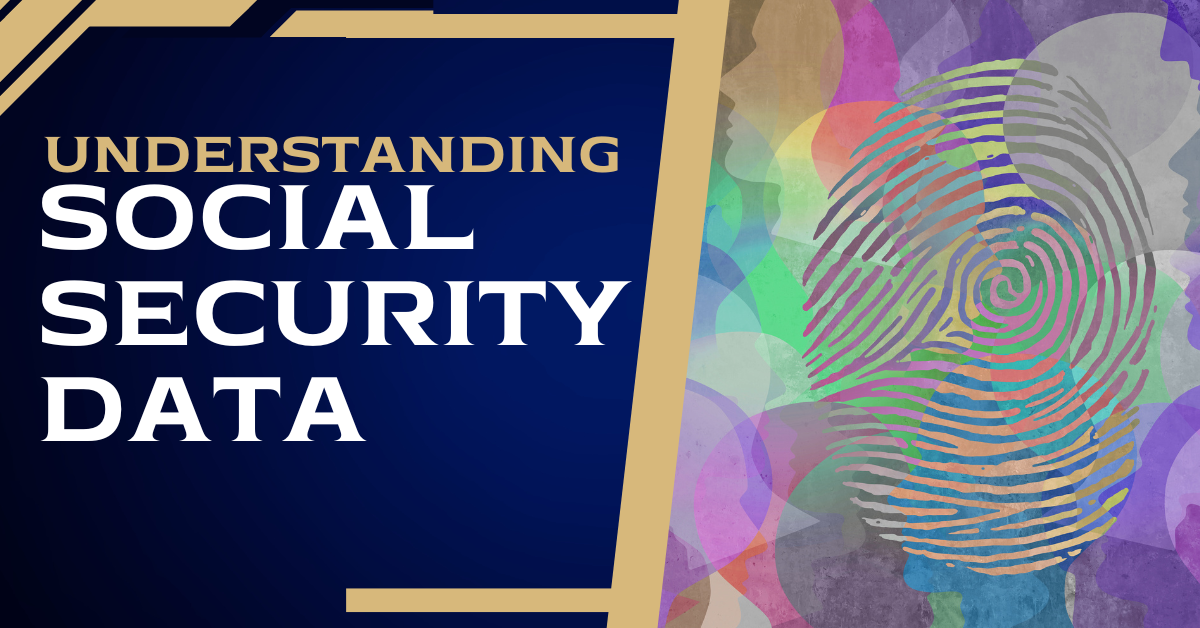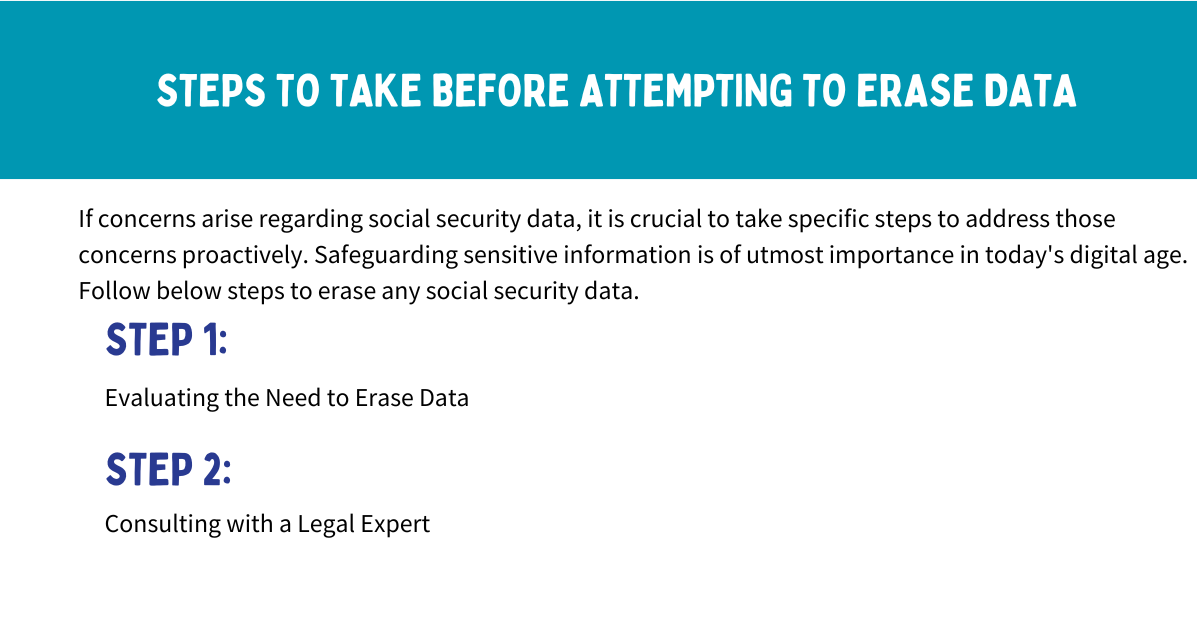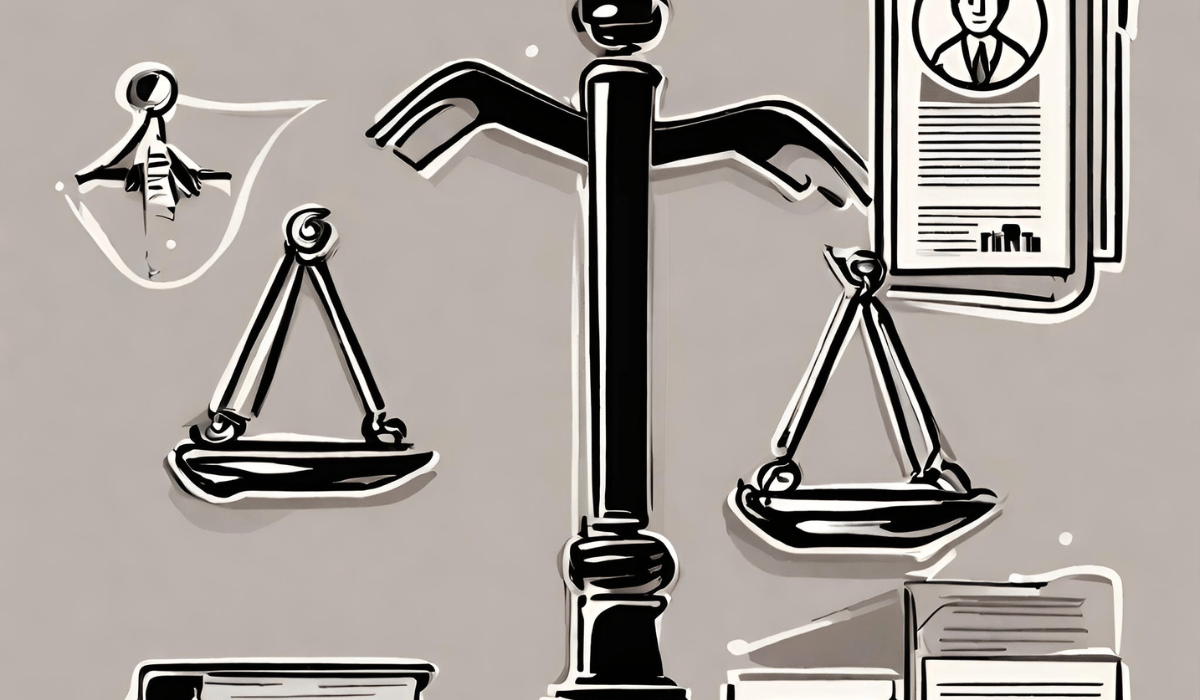You cannot “erase” data from your Social Security record, but you can request corrections to errors.
Privacy concerns have become more prevalent in our increasingly digital world. Many wonder if it is possible to erase their data from various platforms, including social security databases. Thoughtful the ins and outs of social security data and the possibility of erasing it is essential for those concerned about their online footprint.
Understanding Social Security Data

Social security data collects personal information linked to an individual’s social security number. This data is primarily used to determine eligibility for social security benefits and track one’s earning record. It includes sensitive details such as name, date of birth, earnings history, and medical information.
But how is social security data collected in the first place?
What is Social Security Data?
Social security data encompasses various personal information, including employment records, tax contributions, and medical history. This data is essential for the government to administer social security benefits accurately and maintain the system’s integrity.
Employment records are a crucial component of social security data. These records include information on an individual’s earnings history, which is used to calculate the amount of social security benefits they are eligible for. Employers are required by law to report their workers’ earnings to the Social Security Administration (SSA) regularly. This ensures that accurate and up-to-date earning records are maintained for each individual.
Tax contributions also play a significant role in social security data. The Internal Revenue Service (IRS) provides income information to the SSA, which is used to verify the accuracy of reported earnings. This collaboration between the SSA and the IRS helps maintain the integrity of the social security system by ensuring that individuals’ reported earnings align with their tax contributions.
Medical information may also be collected as part of social security data in certain circumstances. This is particularly relevant for disability claims, where medical evidence is required to determine eligibility. The SSA may request medical records and other relevant information to assess an individual’s disability claim and make an informed decision.
How is Social Security Data Collected?
Social Security data is primarily collected through employers, who are legally required to report their workers’ earnings to the Social Security Administration (SSA). This reporting is done regularly, quarterly, or annually, depending on the employer’s size and reporting requirements.
Employers use the “Wage Reporting System” to submit their employees’ earnings to the SSA. This system allows for efficient and accurate reporting, ensuring that individuals’ earning records are up-to-date and reliable.
In addition to employer reporting, the Internal Revenue Service (IRS) also plays a role in collecting social security data. The IRS provides income information to the SSA, which helps verify the accuracy of reported earnings. This collaboration between the SSA and the IRS is crucial for maintaining the integrity of the social security system.
It’s important to note that individuals are also responsible for ensuring the accuracy of their social security data. They should review their earning records periodically and report any discrepancies to the SSA. This helps maintain the integrity of their social security data and ensures that they receive the correct benefits they are entitled to.
In conclusion, social security data is a collection of personal information used to determine eligibility for social security benefits and track earning records. It includes employment records, tax contributions, and in certain cases, medical information. This data is collected primarily through employer reporting and collaboration with the IRS. By maintaining accurate and up-to-date social security data, the government can administer benefits accurately and ensure the integrity of the social security system.
The Possibility of Erasing Your Social Security Data
Given the sensitive nature of social security data, many individuals are curious about the possibility of erasing their personal information from the system. However, it is vital to understand the limitations and potential implications before pursuing such a course of action.
Social security data is a crucial component of the government’s efforts to provide financial security and benefits to its citizens. It includes information such as names, dates of birth, addresses, and social security numbers. This data is collected and stored by the Social Security Administration (SSA) to ensure accurate record-keeping and efficient delivery of services.
Can You Erase Your Data?
Unfortunately, the complete erasure of social security data is not possible. The SSA is legally obligated to maintain accurate records and has stringent privacy and security measures. While certain information can be updated or corrected, it cannot be entirely removed from the system.
When individuals apply for a social security number, they enter into a contractual relationship with the government. This contract establishes the legal basis for collecting and retaining personal data. Erasing this data would disrupt the system’s integrity and undermine the government’s ability to administer social security benefits effectively.
Legal Implications of Erasing Social Security Data
Attempting to manipulate or tamper with social security data can have serious legal consequences. It is vital to consult with legal experts and understand the potential ramifications before taking action.
The unauthorized alteration or deletion of social security data is considered a federal offense and can result in criminal charges. Individuals who engage in such activities may face fines, imprisonment, or both. The government takes the security and privacy of social security data seriously to protect individuals from identity theft and fraud.
Moreover, erasing social security data may have unintended consequences. For example, it could lead to difficulties in accessing government services, such as healthcare, retirement, and disability benefits. It may also impact an individual’s ability to establish credit, apply for loans, or secure employment.
Given these legal and practical considerations, weighing the potential profits against the risks is crucial before attempting to erase social security data. It is advisable to seek professional supervision and explore alternative options, such as updating incorrect information or implementing additional security measures to protect personal data.
Steps to Take Before Attempting to Erase Data

If concerns arise regarding social security data, it is crucial to take specific steps to address those concerns proactively. Safeguarding sensitive information is of utmost importance in today’s digital age. This guide will explore the necessary precautions before attempting to erase any social security data.
Evaluating the Need to Erase Data
Before attempting to erase any social security data, evaluating the need for such action is essential. Understanding the potential risks and benefits of data erasure can help make an informed decision. Consider the following factors:
- The sensitivity of the data: Assess the level of sensitivity of the social security data in question. Determine if it contains personally identifiable information (PII) or other sensitive details.
- Legal requirements: Familiarize yourself with the applicable laws and regulations regarding data protection and privacy. Different jurisdictions may have varying requirements for data erasure.
- Organizational policies: Review your organization’s policies and procedures regarding data management. Ensure that any actions taken align with these guidelines.
- Consequences of data erasure: Consider the potential consequences of erasing social security data. Will it impact ongoing investigations, audits, or compliance requirements?
By thoroughly assessing these factors, you can determine whether erasing the data is the most appropriate action.
Consulting with a Legal Expert
Consulting with a legal expert knowledgeable in social security matters is highly recommended when dealing with social security data. They can deliver guidance on the legal implications of data erasure and ensure you are abiding by the law. A legal expert can assist you in:
- Interpreting relevant laws and regulations: Social security data is subject to specific legal requirements. A legal expert can help you realize the intricacies of these laws and ensure compliance.
- Identifying potential risks: They can assess the potential risks associated with data erasure, such as the possibility of legal repercussions or unintended data exposure.
- Guiding best practices: A legal expert can offer valuable insights into industry best practices for data erasure. They can help you develop a comprehensive plan that minimizes risks and maximizes compliance.
By referring to a legal expert, you can navigate social security data’s complex legal landscape and make well-informed decisions regarding data erasure.
The Process of Erasing Social Security Data
While complete erasure of social security data is not feasible, certain actions can be taken to update and correct inaccuracies within the system.
Social Security data plays a crucial role in the lives of individuals, providing them with a unique identification number and acting as a record of their earnings and contributions to the social security program. However, as with any system, errors can occur, and it is essential to address these inaccuracies promptly and efficiently.
Requesting Data Erasure
While you cannot erase all social security data, you can request updates or corrections to inaccurate information. Contacting the Social Security Administration (SSA) and following their established protocols is the first step in initiating this process.
When contacting the SSA, providing them with all the necessary details and supporting documentation is crucial to substantiate your claim. This may include providing copies of relevant identification documents, tax records, or any other evidence that can help verify the inaccuracies in your social security data.
Once your request is acknowledged, the SSA will review the provided information and assess its validity. They may also conduct their investigation to ensure the accuracy of your claim. This thorough process ensures that the social security system maintains its integrity and prevents fraudulent data manipulation attempts.
Following Up on Your Request
After submitting a request for data erasure or correction, following up with the SSA is crucial to ensure your concerns are addressed. Open communication with appropriate authorities can help resolve discrepancies more efficiently.
During the follow-up process, keeping track of any correspondence or reference numbers provided by the SSA is essential. This information can help you track the progress of your request and provide any necessary updates or additional documentation promptly.
The SSA aims to process requests as quickly as possible, but the complexity of the issue and the number of requests they receive may result in varying response times. Patience and persistence are key during this stage, as it may take some time for the SSA to thoroughly investigate and resolve the inaccuracies in your social security data.
Remember, the SSA is committed to maintaining the accuracy and integrity of social security data. By working together and providing the necessary information, you can help ensure that your social security record reflects your true earnings and contributions, giving you peace of mind for the future.
Potential Consequences of Erasing Social Security Data
Before deciding to pursue any alterations to social security data, it is essential to consider the potential consequences.
Impact on Future Social Security Benefits
Modifying or erasing social security data may have implications for future benefits. It is possible that inaccurate or incomplete data could affect eligibility or the calculation of benefits. Proceeding cautiously and seeking expert advice is crucial to avoid any negative impacts.
Legal Consequences of Data Erasure

Attempting to erase or manipulate social security data can result in legal repercussions. Engaging in fraudulent activities or presenting false information is unlawful and may lead to severe penalties, including fines and imprisonment. Understanding the legal implications is essential for making informed decisions about data management.
While the desire to erase personal data from social security databases may be understandable, complete erasure is impossible. However, individuals can take proactive steps to address any inaccuracies or concerns. Consulting with legal experts and understanding the potential implications is crucial when navigating the complex social security data management world.
Key Takeaways
- Social Security records are crucial and are maintained meticulously.
- If there are errors in your record, you can request a correction.
- Complete erasure or deletion of records is not permitted.
- Always safeguard your Social Security number to prevent misuse.
- Stay vigilant and monitor any suspicious activities related to your Social Security.
FAQs
Q: Can I change my Social Security number?
A: Only in rare cases, such as identity theft or harassment, and with substantial documentation.
Q: How do I correct errors in my Social Security record?
A: Contact the Social Security Administration (SSA) and provide the necessary documentation to validate your claim.
Q: Should I give out my Social Security number freely?
A: No, always safeguard your Social Security number to prevent fraud or misuse.
Q: What if I suspect someone is misusing my Social Security number?
A: Report it immediately to the SSA, the FTC, and the police.
Q: Can I check my Social Security records online?
A: You can create an account on the official SSA website to view and monitor your records.
Conclusion
In conclusion, individuals cannot erase their data from the Social Security system, they can request corrections to any errors in their record. Complete removal of data is not possible due to legal and operational reasons within the Social Security Administration. It is essential to safeguard one’s Social Security number and be vigilant about its use to prevent potential misuse or fraudulent activities.
